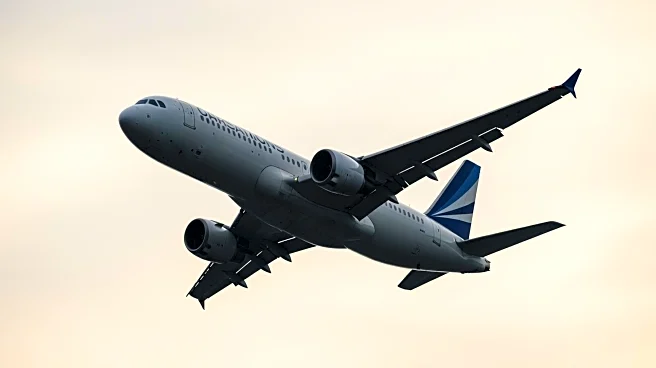What's Happening?
Air Dolomiti, an Italian regional carrier and part of the Lufthansa Group, is set to expand its fleet with Embraer E195 aircraft acquired from Austrian Airlines. Austrian Airlines plans to phase out its 17
Embraer E195LRs by 2028, with 13 of these aircraft being transferred to Air Dolomiti. The first aircraft is expected to arrive in December and will be operational by March 2026. Currently, Air Dolomiti operates nine E190s and 17 E195s, and the smaller E190s will be gradually replaced by the incoming E195s. By the end of 2028, Air Dolomiti's fleet will consist of 30 E195s. The airline plans to expand its network, although specific details are yet to be confirmed.
Why It's Important?
The expansion of Air Dolomiti's fleet is significant for the airline's operational capabilities and its role within the Lufthansa Group. By increasing its fleet size, Air Dolomiti can potentially enhance its service offerings and expand its route network, which may lead to increased passenger traffic and revenue. This move also reflects the strategic decisions within the Lufthansa Group to optimize fleet operations and improve efficiency. The transition to a larger fleet of E195s could position Air Dolomiti to better compete in the regional airline market, offering more capacity and potentially more frequent flights.
What's Next?
Air Dolomiti is expected to continue its role in feeding passengers into Lufthansa's Munich hub, with potential developments in its wet-lease operations for Austrian Airlines during the winter season. The airline's expansion plans may lead to new routes and increased connectivity within Europe, although specific details are yet to be announced. Stakeholders, including passengers and partner airlines, will be watching for announcements regarding new destinations and service improvements.
Beyond the Headlines
The fleet expansion could have broader implications for regional air travel in Europe, potentially influencing competition among carriers and impacting fare structures. As Air Dolomiti increases its fleet size, it may also contribute to increased demand for pilots and crew, affecting employment in the aviation sector. Additionally, the move may reflect broader trends in the airline industry towards fleet optimization and strategic partnerships.














